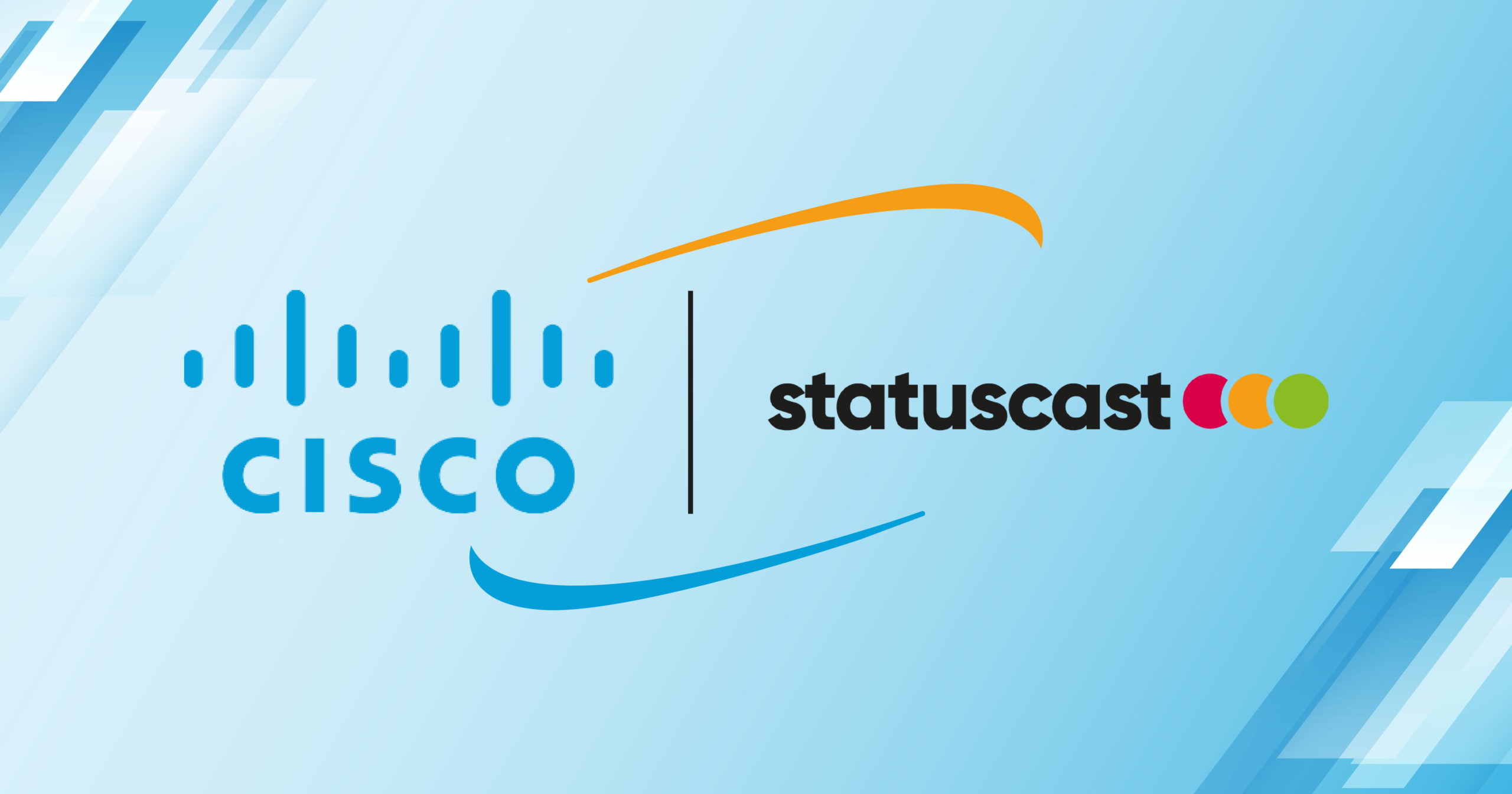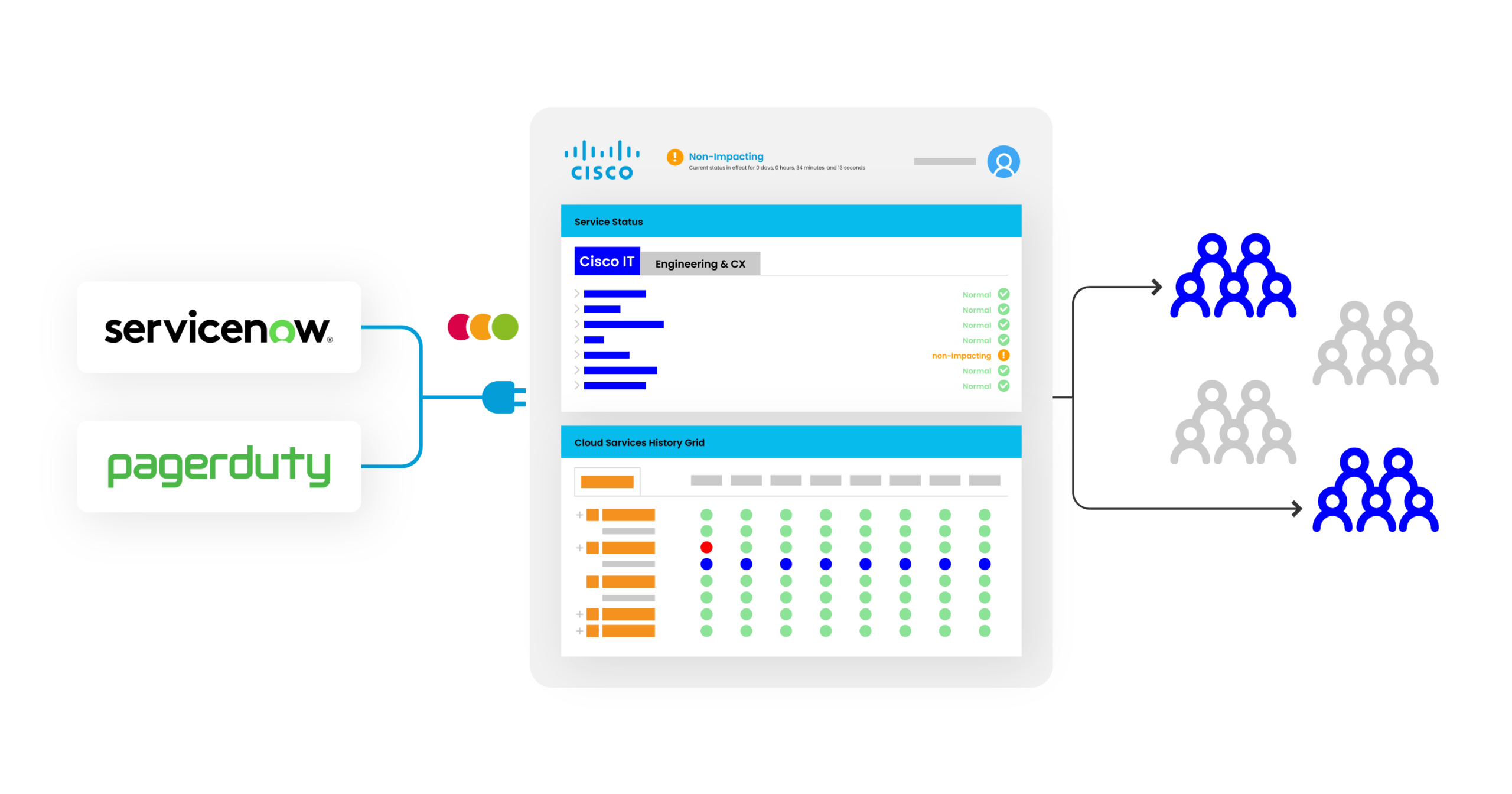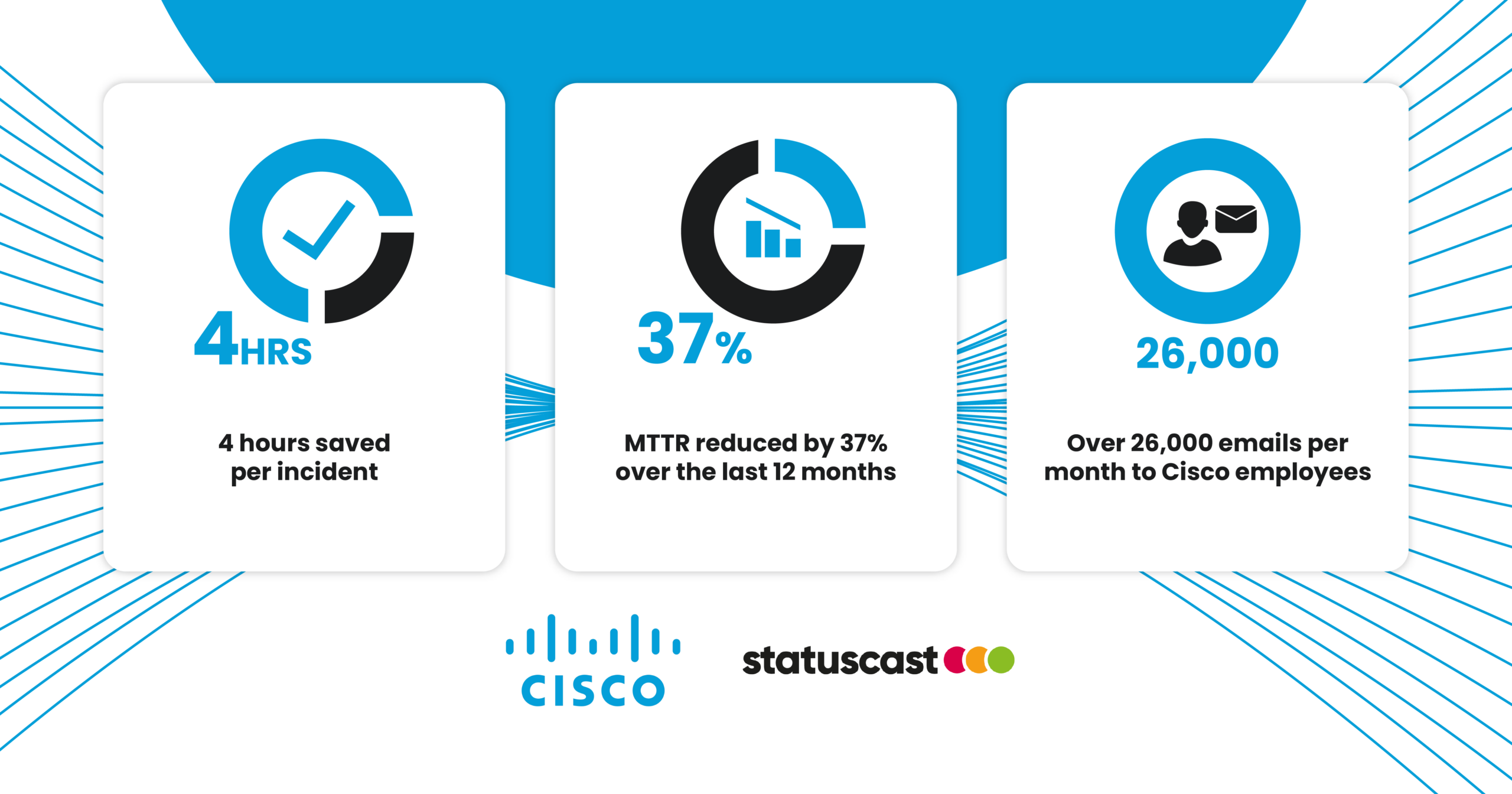Products
Features
Solutions
For Cisco, a titan in the digital communications space, the imperative of fluid incident communication across a sprawling workforce was a pressing reality. The previous architecture employed for incident notification emerged as a costly bottleneck, proving inefficient and restricting the seamless flow of crucial updates. Given the intricate nexus of services and the broad spectrum of stakeholders, the inadequacy of their former system propelled Cisco to embark on a quest for a sophisticated, robust solution to refine their incident communication landscape.

Saved per Incident
Emails to Employees
in Mean Time to Repair
Cisco Systems Inc. is a global leader in digital communication technology, offering a vast range of software, hardware, and cloud-based services to facilitate and enhance connectivity and collaboration. Cisco's solutions are at the forefront of networking, security, and cloud management. It holds a distinguished reputation among Fortune 500 companies, with more than 87% relying on Cisco's robust and innovative services. The immense trust from the corporate sector underlines Cisco's pivotal role in the modern digital infrastructure. Through its comprehensive offerings and continuous drive for innovation, Cisco transforms the way individuals and organizations communicate, solve problems, and execute their daily operations.
Industry
Digital Communications
Employees
80,000
Use Case
Private Status Page

Cisco faced challenges with efficiently communicating the status of their software services to over 80,000 employees. Many of Cisco’s project management tools, such as ServiceNow and PagerDuty, didn’t provide visibility into incidents and status updates, which meant Cisco’s engineers needed to report them manually.
Without a unified dashboard, the main method of communicating status and incident updates was email—but to opt in meant receiving emails about every software update, not just the ones relevant to the user. Most employees didn’t want to fill up their inboxes any more than they had to, so many did not subscribe. This led to confusion, with critical updates scattered across different channels and rumors spreading faster than the truth.
Communicating incidents was a challenge because of the number of users and the complexity of our infrastructure,” said Deepa Duvvuru, Program Manager at Cisco. “If users experienced a latency or a performance issue, they didn’t know if it was a widespread problem or specific to their laptop or network.”
Because of this confusion, users submitted a high volume of support tickets. “The Enterprise Operations Center was frequently interrupted with questions about outages, which took time away from our main priority: incident resolution,” Duvvuru said. "We needed a dashboard to communicate the health of our services and incident statuses to all our users, without bombarding them with more emails.”
Cisco sought a partner who would listen to their specific requirements, provide customization options and ensure transparency as they streamlined incident communication.

Program Manager
“The service keeps getting better, even after deployment. Our team at StatusCast always finds a way to help us out, whether it’s fixing an issue or implementing a new idea.”
Cisco began evaluating status page products, searching for one that offered extensive customization and automation. Cisco’s Enterprise Operations Center chose StatusCast’s private status page because it met their technical requirements and could be tailored to their specific needs.
StatusCast's automation empowered Cisco to streamline incident updates and share real-time information without needing an engineer to enter the data manually. The easy-to-use administrative access allowed them to customize the status page according to their users' preferences.
Working closely with StatusCast, Cisco developed a page that would communicate service statuses across both incidents and scheduled maintenance, as well as categorize components and services to make the page easier to navigate.

After sharing the status page with a small group of stakeholders, Cisco deployed it. The comprehensive dashboard enables users to view the real-time and historical health of IT and cloud services. Under separate tabs and organized by category, users can find all open and recently resolved incidents, with live updates.
The user base grew rapidly as employees learned they could easily subscribe to SMS or email notifications for the types of incidents most relevant to them, or they could simply access the link to view all incidents.
“We moved away from email communications, which targeted a wide audience to ensure we caught everyone who might be impacted,” Duvvuru said. “Now users can subscribe to receive notifications for certain services, or all services when there is an outage. The status page is a one-stop shop that enables users to tailor the experience to meet their needs.”

Program Manager
“We no longer have to post updates on different communication channels and answer the same questions from multiple users. We can simply point our users toward the status page.”
Over the last year, StatusCast has helped reduce Cisco’s Mean Time To Repair (MTTR) by 37%. This has accompanied a significant decrease in support requests, now that more than 80,000 employees can access the status page with one click.
The private status page saves the Enterprise Operations Center about four hours per incident, accelerating their incident response time and protecting the Fortune 100 company from the severe costs of downtime. When services go down, every minute counts, and reducing downtime speeds up MTTR and saves the company a lot of money—for large enterprises, downtime can cost as much as $1-5 million per hour.

Integration with other SaaS software, such as ServiceNow and PagerDuty, enables StatusCast to automatically push updates to Cisco’s status page. That, combined with user visibility, gives engineers time back to focus on resolving incidents quickly.
An ongoing relationship with StatusCast means that Cisco receives timely support when questions arise – and also empowers the Enterprise Operations Center to innovate. For example, the team is in the process of adding filters so end users can choose to view only incidents that are relevant to them.
“The service keeps getting better, even after deployment,” Duvvuru said. “Our team at StatusCast always finds a way to help us out, whether it’s fixing an issue or implementing a new idea.”
With this collaboration, Cisco continues to customize and streamline its services to make incident communication even more intuitive for users. By consolidating communications from complex systems and distributed operations across many departments and locations, Cisco provides its employees with a reliable, single-source-of-truth for all the critical services they rely on.
See how one of the nations top universities leveraged our public status page to optimize incident communication and protect their community from critical service disruptions.

Explore how QuickBase, a renowned cloud database solution for custom business applications, leveraged StatusCast to optimize uptime reporting and improve incident communication for over 6,000 clients
© Copyright StatusCast 2022 | Terms & Conditions | Privacy Policy
© Copyright StatusCast 2022 |Terms & Conditions |Privacy Policy

